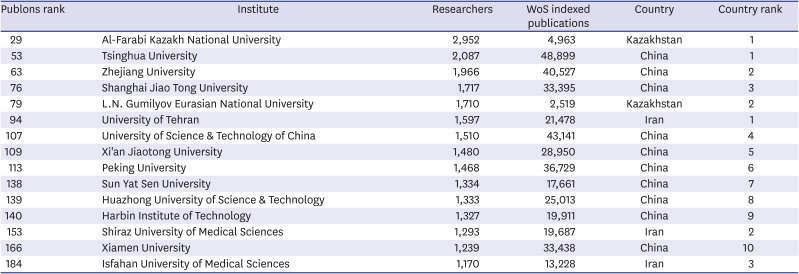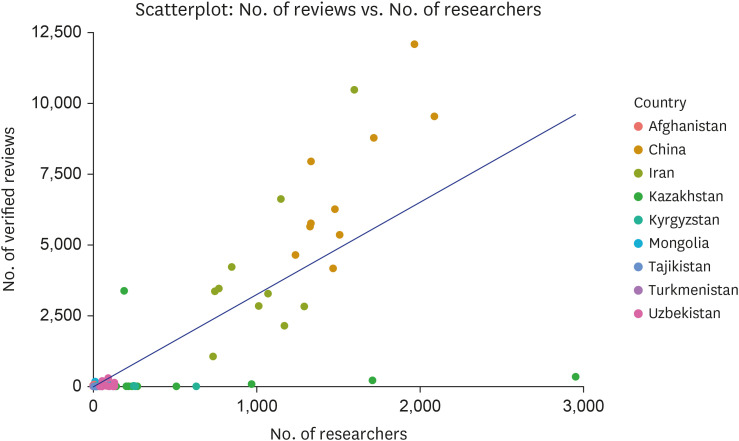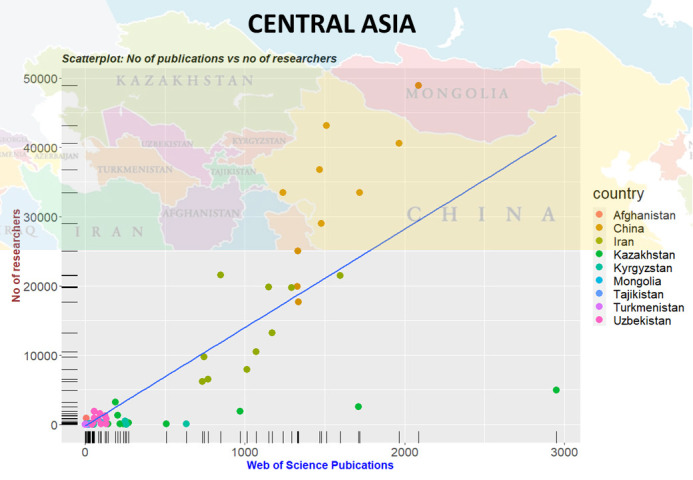1. Gasparyan AY, Gerasimov AN, Voronov AA, Kitas GD. Rewarding peer reviewers: maintaining the integrity of science communication. J Korean Med Sci. 2015; 30(4):360–364. PMID:
25829801.
2. Gasparyan AY, Yessirkepov M, Voronov AA, Koroleva AM, Kitas GD. Comprehensive approach to open access publishing: platforms and tools. J Korean Med Sci. 2019; 34(27):e184. PMID:
31293109.

4. Ahmed S, Pinto B. The peer review process in ASIA. Cent Asian J Med Hypotheses Ethics. 2020; 1(2):136–141.

5. Gaur PS, Gupta L. Social media for scholarly communication in Central Asia and its neighbouring countries. J Korean Med Sci. 2021; 36(4):e36. PMID:
33496088.

6. Adambekov S, Askarova S, Welburn SC, Goughnour SL, Konishi A, LaPorte R, et al. Publication productivity in Central Asia and countries of the former Soviet Union. Cent Asian J Glob Health. 2016; 5(1):261. PMID:
29138734.

7. Kavadichanda C. Journal metrics: different from author metrics. Indian J Rheumatol. 2020; 15(3):149–154.
8. Bornmann L, Marx W, Gasparyan AY, Kitas GD. Diversity, value and limitations of the journal impact factor and alternative metrics. Rheumatol Int. 2012; 32(7):1861–1867. PMID:
22193219.

9. Ahmed S, Zimba O, Gasparyan AY. Moving towards online rheumatology education in the era of COVID-19. Clin Rheumatol. 2020; 39(11):3215–3222. PMID:
32939569.

10. Tollefson J. China declared world's largest producer of scientific articles. Nature. 2018; 553(7689):390.

11. Basu A, Foland P, Holdridge G, Shelton RD. China's rising leadership in science and technology: quantitative and qualitative indicators. Scientometrics. 2018; 117(1):249–269.

12. Yakhontova T. English writing of non-anglophone researchers. J Korean Med Sci. 2020; 35(26):e216. PMID:
32627440.

13. Yessirkepov M, Nurmashev B, Anartayeva M. A Scopus-based analysis of publication activity in Kazakhstan from 2010 to 2015: positive trends, concerns, and possible solutions. J Korean Med Sci. 2015; 30(12):1915–1919. PMID:
26713071.

14. Gasparyan AY, Nurmashev B, Udovik EE, Koroleva AM, Kitas GD. Predatory publishing is a threat to non-mainstream science. J Korean Med Sci. 2017; 32(5):713–717. PMID:
28378542.

15. Yamshchikov GV, Schmid GP. Publication practices and attitudes towards evidence-based medicine in central Asia. Lancet Glob Health. 2013; 1(2):e73–4. PMID:
25104158.

16. Ahmed S, Anirvan P. The true meaning of plagiarism. Indian J Rheumatol. 2020; 15(3):155–158.
17. Misra DP, Ravindran V, Agarwal V. Integrity of authorship and peer review practices: challenges and opportunities for improvement. J Korean Med Sci. 2018; 33(46):e287. PMID:
30416407.

18. Gasparyan AY, Ayvazyan L, Akazhanov NA, Kitas GD. Conflicts of interest in biomedical publications: considerations for authors, peer reviewers, and editors. Croat Med J. 2013; 54(6):600–608. PMID:
24382859.

19. Meo SA, Al Masri AA, Usmani AM, Memon AN, Zaidi SZ. Impact of GDP, spending on R&D, number of universities and scientific journals on research publications among Asian countries. PLoS One. 2013; 8(6):e66449. PMID:
23840471.

20. Li M, Liu X, Zhang L. Scientific publications in public, environmental and occupational health journals by authors from China, Japan and Korea in East Asia: a 10-year literature survey from 2003 to 2012. Int J Occup Med Environ Health. 2015; 28(4):663–673. PMID:
26216306.

21. Meo SA, Usmani AM. Impact of R&D expenditures on research publications, patents and high-tech exports among European countries. Eur Rev Med Pharmacol Sci. 2014; 18(1):1–9.
22. Yessirkepov M, Nurmashev B, Anartayeva M, Seksenbayev B. The author's response: educating researchers and editors: contributing to ethical publication activity. J Korean Med Sci. 2016; 31(3):476–477. PMID:
26955253.

23. Kelly T, Liaplina A, Tan SW, Winkler H. Reaping Digital Dividends: Leveraging the Internet for Development in Europe and Central Asia. Washington, D.C., USA: The World Bank;2017.
24. Gould D, Kenett DY, Panterov G. Multidimensional Connectivity: Benefits, Risks, and Policy Implications for Europe and Central Asia. Rochester, NY, USA: Social Science Research Network;2018.
25. Barroga E, Matanguihan GJ. Correcting language mistakes in qualitative research articles. Cent Asian J Med Hypotheses Ethics. 2020; 1(2):146–151.

26. Janz RF, Kutanov A. The case of NRENs in Central Asia. Cent Asian J Glob Health. 2012; 1(1):32. PMID:
29755864.

27. O'Doherty D, Dromey M, Lougheed J, Hannigan A, Last J, McGrath D. Barriers and solutions to online learning in medical education - an integrative review. BMC Med Educ. 2018; 18(1):130. PMID:
29880045.
28. Gasparyan AY, Kitas GD. Best peer reviewers and the quality of peer review in biomedical journals. Croat Med J. 2012; 53(4):386–389. PMID:
22911533.

29. Zimba O, Gasparyan AY. Peer review guidance: a primer for researchers. Reumatologia. 2021; 59(1):3–8. PMID:
33707789.
30. Misra DP, Agarwal V. Blaming the peer reviewer: don't shoot the messenger!! Indian J Rheumatol. 2020; 15(3):162–164.
31. Ahmed S, Mohini . Building trust in journals and in peer review: need of the hour during the COVID-19 pandemic. Rheumatol Int. 2021; 41(2):501–502. PMID:
33161448.









 PDF
PDF Citation
Citation Print
Print





 XML Download
XML Download